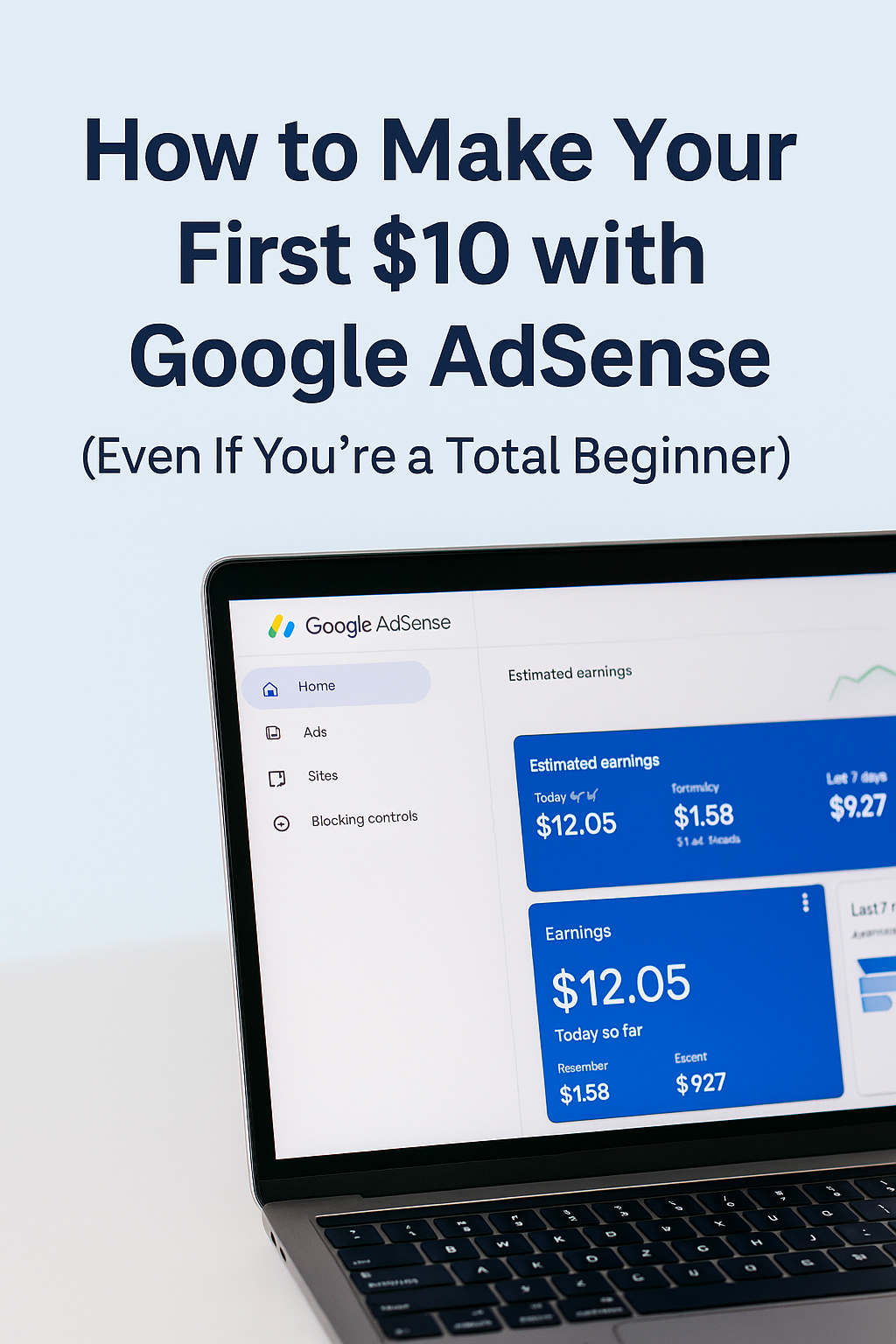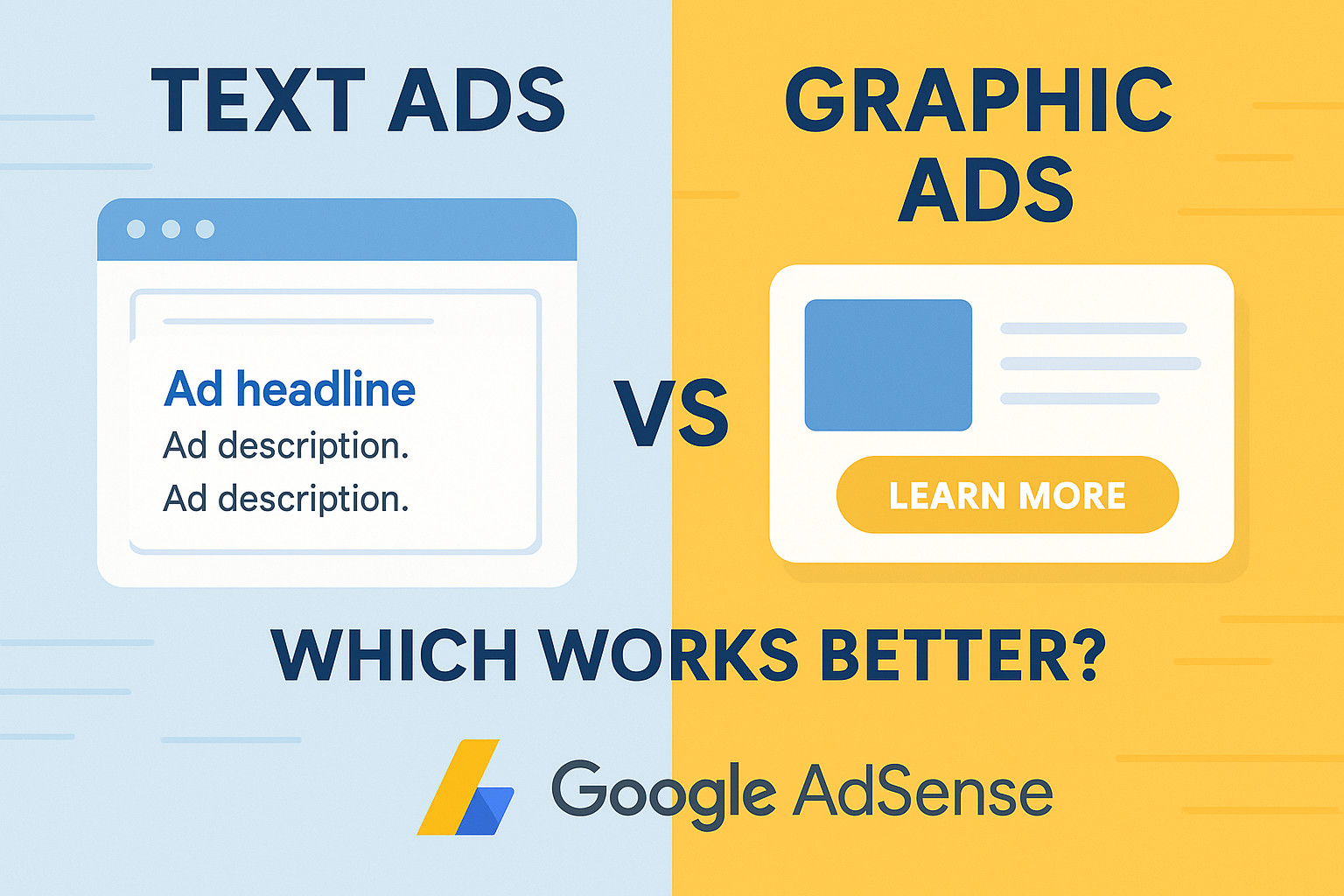
But now you're staring at your dashboard like, “Why the heck am I still stuck at $0.02 after 3 days?”
Bro, trust me, we've all been there.
In this guide, I’m gonna walk you through real, practical, and beginner-friendly steps to help you make your first legit $10 from AdSense. Bukan cuma teori doang, ini langkah-langkah yang bisa lo praktekkan right after you read this.
✅ Step 1: Build Trust with Google (and Visitors)
Before you even think about the money, your blog needs to look trustworthy. Google hates shady, half-baked sites. So here's the bare minimum:
-
About Page: Tell people who you are and what your blog is about.
-
Contact Page: Even if it’s just an email form, it shows you’re reachable.
-
Privacy Policy & Disclaimer: You can generate these online for free. Just do it.
💡Pro Tip: Tambahin logo yang simple dan favicon biar tampil lebih profesional.
✅ Step 2: Write Evergreen, Clickable, Low-Competition Content
Here’s where most bloggers mess up. Mereka nulis konten yang bagus tapi gak ada yang nyari.
What you need is keyword gold.
🔍 Use free keyword tools:
Cari keyword kayak:
-
“how to verify AdSense PIN 2025”
-
“does AdSense pay for clicks or views”
-
“AdSense approval trick for new blogs”
Then write detailed blog posts answering those queries in your own voice. No keyword stuffing. No copy-paste nonsense.
✅ Step 3: Get That Traffic (The Right Way)
Here's the truth: traffic is the fuel. But not all traffic is created equal.
📢 Where to get traffic that actually clicks on ads:
-
Pinterest → Create niche pins, link back to your post.
-
Reddit → Drop your link in context. Jangan nyepam.
-
Facebook Groups → Join niche groups and share valuable tips, then soft-plug your blog.
-
Quora → Answer questions, then refer back to your blog with CTA like “More details here...”
🧠 Bonus: Fokus di konten yang punya buyer intent. Artikel yang kasih solusi → lebih besar kemungkinan diklik iklannya.
✅ Step 4: Optimize Your Ads for Clicks (Without Being Annoying)
AdSense gak bayar berdasarkan jumlah iklan, tapi berdasarkan klik yang berkualitas. Jadi penempatan itu penting banget.
🔥 Best Ad Placements:
-
After first paragraph of every article
-
In-content ads between sections
-
At the end of the post, above related posts
-
Optional: Sidebar (tapi jangan lebay)
💥 Pro Tip: Gunakan responsive ads biar tampil rapi di mobile.
✅ Step 5: Content That Converts = Earnings
Okay, now let’s talk about what kind of posts actually get clicks.
📈 High-CTR Content Types:
-
“How to” guides (like this one 😉)
-
Listicles (e.g., “10 Best AdSense Niches for Beginners”)
-
Review Posts (e.g., “I Tried AdSense on My Blog for 1 Month – Here’s What I Earned”)
-
“My First $X with AdSense” type of storytelling
Jangan lupa tambahkan call-to-action ke artikel lain lo. Itu nambah pageviews dan waktu kunjungan = nilai lebih buat AdSense.
✅ Step 6: Track Performance (Like a Nerd)
You can’t grow what you don’t track. Gak seru kalo lo ngeblog buta arah.
🎯 Tools to monitor your growth:
-
Google Analytics → Lihat bounce rate dan traffic.
-
Google Search Console → Lihat keyword yang bawa pengunjung.
-
AdSense Reports → Fokus ke CPC, CTR, dan RPM.
💡 Realistic Timeline to $10
If you do all the above:
-
✅ Posting 3-4 artikel SEO-ready
-
✅ Promoting di social media tiap hari
-
✅ Ngecek dan update konten lo tiap minggu
➡️ Maka dalam waktu 2-4 minggu, lo bisa nyentuh $10 pertama lo. Bahkan lebih cepat kalau niche lo punya CPC tinggi kayak finance, tech, atau education.
🔥 Bonus Tips for Faster Monetization
-
Gunakan internal link di setiap artikel.
-
Tulis dalam bahasa Inggris (CPC lebih gede).
-
Fokus ke niche: makin fokus, makin tinggi relevansi iklannya.
-
Coba gabung AdSense Alternatives juga (sebagai backup).
🧠 Final Thoughts
Your first $10 is more than just numbers—it’s proof that your blog works. Setelah lo ngelewatin milestone ini, semuanya mulai kebuka: $10 jadi $50, lalu $100. Tapi inget: konsistensi adalah kunci.
And don't fall into the trap of comparing your blog with others. You're on your own journey, bro. The only competition is the blogger you were yesterday.
💬 Enjoying this guide? Bookmark Cuandemy and follow our AdSense category for more actionable blogging content!




